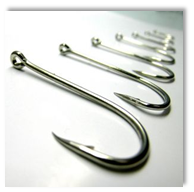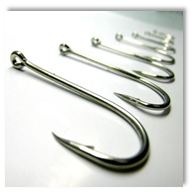19 amazing sites with beautiful, copyright-free photos
Here is a list of sites that offer rich, creative, completely copyright-free photos that can be used in blog posts, Powerpoint, websites, or anywhere...

 Forget about stuffing a PowerPoint presentation with everything your little startup has accomplished in the first few days, weeks or maybe even months of its life. How old your business is and what glorious milestones it has reached so far is of little consequence when it comes to selling investors. Investors are people. Yes, they are looking at generating another stream of income for their cash, because cash is king. But they are also people like you and me, with their own problems, and with very little time and patience.
Forget about stuffing a PowerPoint presentation with everything your little startup has accomplished in the first few days, weeks or maybe even months of its life. How old your business is and what glorious milestones it has reached so far is of little consequence when it comes to selling investors. Investors are people. Yes, they are looking at generating another stream of income for their cash, because cash is king. But they are also people like you and me, with their own problems, and with very little time and patience.
Just like your customers will grant you only a few seconds before moving on, so will investors. They will politely sit through your presentation, but tune out if you're boring. Contrary to what you might think, they're not looking for the whole story. They will find out later. If you manage to hook them that is. Think about the last movie you watched and enjoyed. And I mean, really enjoyed, so much that you forgot you were in the movie theater. You were onscreen, running away from some hideous monsters, teamed up with the main character. As soon as the title of the movie dissolved, you saw action. Some guy was running away from something roaring and huge. You were on the edge of your seat, weren't you? Immediately wanting to find out what happens next? Bingo.
Let me repeat this again. Your deck is a hook. Every slide has to have only a few points and make investors want to find out more. Pitch them every day. Practice, practice, practice. Watch their faces. Do they appear alert? Are they paying attention? On what slide did they start yawning and checking their phones? This slide will need to be fixed. Speak clearly, loudly, in short bursts. Do several dry runs in front of the mirror, and eat two bananas a few minutes prior to the presentation. This is not some silly monkey advice. The potassium in bananas slows down your blood pressure and makes you calmer, an old actor's trick.
All right, you think, this is all great advice. But what exactly do I put in my deck? Don't fret. There is a format you can use that has helped multiple startups raise money in the past. You can customize it to your unique needs, but the basic gist will have to stay more or less the same.
Like a book cover, this is your opening slide, the face of your company, and it better look clean and crisp. Overall, it's a good idea to keep your entire deck stylistically as simple as possible. And don't forget to brand it to your colors. The cover slide should contain three things:
Elevator pitch has gotten its name for a reason. You ride in an elevator with investors and you have only a few minutes to make your pitch. Make it fast, simple, and to the point. When asked,
“Who are you and what is it that you do?” You respond, "Hi, I'm Johnny Smith, and I'm a shoe shiner." Or, as applicable to a business: "Hi, we're Smith's Shine, and we manufacture banana-scented shoe polish." This is your hook. Banana-scented shoe polish? What? You got them curious. Now they want to find out more. Remember, we have discussed this before. "We are X that does Y for Z." Now is the time to say it.
Here you can insert a few lines about your achievements, but only a few. Have you scored some big customers recently? Have you Patented, licensed, or negotiated something important? Developed some amazing brand-spanking-new software that's being beta tested or maybe even used already? This is where it goes, but be brief and remember: story tramples facts. If you have nothing to say here, skip this slide. If you do have numbers to prove your traction, include them here. This is pivotal to let your audience know that the opportunity is real.
How big is the market opportunity? What is the industry landscape and what has been happening lately? Include the latest data and stats that can help prove your point. Resist the temptation to make it look too complicated. All slides are a background to your story, so make a few bold points, and tell the rest. One simple pie chart will do. On the other hand, this slide is key. Don't make your investors wait for important market information. They want to know the numbers to make a decision.
What pain are you solving? Is it a mere headache or a throbbing migraine? It better be something significant. Something that is very much broken in the world. You should be able to say that in one sentence on the slide and tell the rest of the story, gauging reaction. Hopefully, you have raised interest. Now is the time to dive into the next slide.
Here is where you shine, or more accurately where your product shines. If you can pass around a phone with an app for a live demonstration, do that. If you have a video you can play (beware, it shouldn't be longer than a few minutes), do that instead. If you have any other way to demonstrate your product, do it. It will have a much greater impact on your audience as opposed to screenshots.
Okay, great. You’ve gotten everyone excited. Now what? How will you make the money? Make it realistic, but keep in mind that your investors are aware that this is one big fat lie. Nobody can predict how your revenue will grow. And yet you have to show an optimistic enough picture for investors to visualize and believe in your story. In other words, this is one slide for you to showcase your business model: how it will grow.
Who are the people you will market to? Where do they live? What kind of slippers do they wear? Why will they buy your product? How will you sell it to them? For how much? You don't have to say ALL of this, but you have to make investors believe that you know your customers inside and out and list your complete arsenal of approaches and tactics to make people shell out their hard-earned dollars.
Logically, the next question investors will ask themselves will be, "Who else is out there and why would anyone switch from their product to yours?" Who are the sharks that will try to eat you? Throw a bunch of logos of your competitors on the screen, maybe do an X and Y axis graph to show their relationship to your company and to each other. Talk about the rest.
Aha, here we go. Now they will wonder who you have on your team and how will you collectively pull this off. Suggestion: if you have some strong players, like the CEO of some big reputable company who quit and joined you, put this in the beginning, as it is an asset. In general, any of these slides can be moved around.
This is where your "hockey stick" goes. You can list the amount of money you're looking to raise here or do a separate slide after this one (especially if you have names of other investors you can list), but I suggest to keep it simple. Moreover, everyone knows it's just a story and the numbers are not real anyway. What investors want to see is that you've done your homework and know how you will spend the money. Here, the critical part is to ask. Don't be shy. This is why you're presenting. Ask for money and show what you will do with it.
This slide is very similar to the cover slide in the beginning. Include your logo, tagline, a line of the summary to take away, and contact information, so that it can hang on the screen and people who are interested can write down your information.
You can have more optional slides after this one, for investors to pick and choose from if they desire to do so after the presentation. Here are a few great resources for example pitch decks from Forbes, Business Insider, One Match Ventures, and Haiku Deck. Browse them before you do your own.
You can have more optional slides after this one, for investors to pick and choose from if they desire to do so after the presentation. Here are a few great resources for example pitch decks from Forbes, Business Insider, One Match Ventures, and Haiku Deck. Browse them before you do your own.
Your to-do list:
Stijn is Kalungi's co-founder and board member. He is a serial SaaS marketing executive and has over 30 years of experience working in software marketing. He is co-author of the T2D3 book and masterclass that helps startups drive exponential growth.
Here is a list of sites that offer rich, creative, completely copyright-free photos that can be used in blog posts, Powerpoint, websites, or anywhere...
Whether B2B SaaS companies don’t have the time to build their first in-house team or don’t want to invest in another marketing agency selling empty...
With 2014 coming to a close I’d like to look forward to the way we get work done continues to change. After all the changes in the past 20 years,...
Be the first to know about new B2B SaaS Marketing insights to build or refine your marketing function with the tools and knowledge of today’s industry.